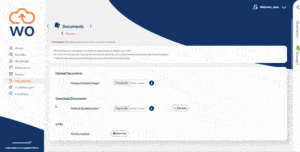Hiring an employee is a complex, time-consuming and costly exercise.
When you add up all of the HR and recruitment costs involved in advertising, interviewing and onboarding, the total cost can be in the tens of thousands of pounds.
And when a successful candidate drops out, all of this investment in a person is lost, with costs often doubled as hirers and recruiters need to go through the whole process again.
This is what makes drop out rates such a big deal. Here’s a look at the issue and the role of onboarding in limiting losses:
What is onboarding dropout?
Onboarding ‘dropout’ refers to when a successful candidate fails to take on the role they have been offered. This can be tracked as a percentage, allowing HR to monitor the issue over time but often is neglected creating a black hole of lost time, people and money.
Why does an onboarding dropout rate matter?
The most obvious reason why dropout rates matter is cost. This is both the financial cost of recruitment and the administrative time and resources that are lost as a result. The extended time a position remains unfilled is also likely to have an impact on productivity.
Why do successful candidates drop out?
There are a range of reasons why a candidate may drop out but the two most common causes are:
Accepting alternative offers
Candidates will often ‘hedge their bets’, accepting one role while hoping that an alternative option becomes available. They may also use a role as ‘leverage’ to obtain an increased salary offer from an existing employer.
It’s an increasing problem due to the changing nature of the employment marketplace with jobs generally being viewed as more flexible and less permanent. The online and more remote nature of the HR and recruitment process also means that candidates can feel less responsibility to the employer.
Changing their minds
Sometimes candidates simply have second thoughts about the role they have accepted. Any doubts they may have had previously are liable to be amplified by any negative experiences they have during the onboarding phase.
This is why an effective onboarding process needs to deliver a positive and engaging experience that draws new hires into the organisation. The longer onboarding takes and the less contact someone gets in the process, the more time there is for doubts and second thoughts to creep in.
What does ‘ghosting’ refer to?
‘Ghosting’ is a term for when a candidate drops out but fails to inform the hiring team. Typically, the person will simply stop responding to communications from HR; calls won’t be answered and emails will not receive replies.
This ‘ghosting’ compounds the problem of dropout as it makes it incredibly difficult for hiring teams to identify when a candidate is simply slow to respond or has opted out of the process. The more new hires are being handled, the harder it becomes to keep track of this.
How can onboarding help to reduce dropout rates?
An effective onboarding process will reduce the risks that are posed by dropout. The ways that this is achieved include:
Streamlined process
The less time it takes to get a successful candidate started in the role, the less risk there is of dropout. Using a traditional approach, onboarding can take weeks or months as contractual paperwork has to be printed and posted.
A cloud-based approach allows the process to be completed in a matter of hours. A system such as Webonboarding provides all of the information required via an online portal with digital signatures removing the need for physical paperwork.
Engaging experience
A successful onboarding process will have steps in place which are designed to actively draw candidates into the organisation. This can include personal welcome messages, video conference chats, welcome packs and general background ‘colour’ about the history and ethos of the employer.
Hiring teams need to find the right balance between effective communications that ensure candidates don’t feel ‘out of the loop’ while never overwhelming new starters with an excess of information. With digital onboarding management solutions, feedback tools allow the quality of the experience to be tracked over time.




